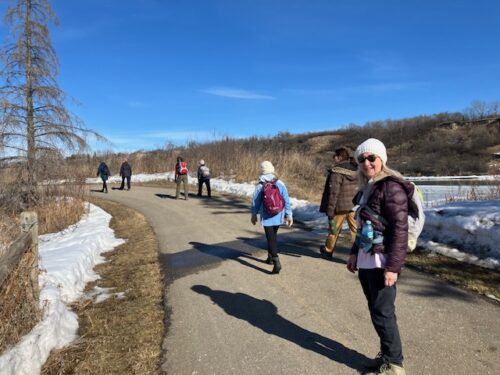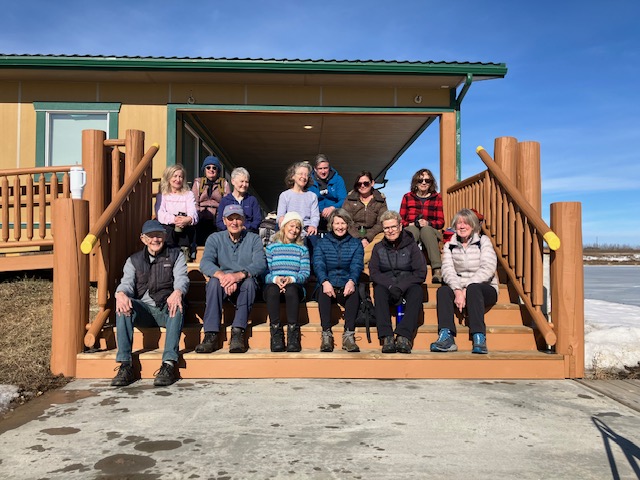Thirteen hikers came out to the Northeast River Valley Park. This area was recently purchased by the city from the Catholic Church, who had been running a children’s camp here.

On this Sunday morning, we were graced with spring-like weather: sunny, calm, and 9 degrees. After the midway point, there wasn’t a jacket to be seen!
On the trail, I had the opportunity to share a bit about WTA with the only cyclist we encountered. Like us, he was in no rush. However, our conversation was perhaps too engaging, which resulted in the leader (me) falling behind most of the pack!
We heard and saw at least one solitary goose This prompted the question of the hour: “Was this the earliest of the returning migrators? Or did this bird actually overwinter?”
Some of the group, being fairly goal-oriented, considered the yet-to-be-completed bridge way ahead: It had to be attained! Thus, we brought the total effort to 15 kms. It was just too nice a day to stop!
Thank you to everyone who came out on this day. Here are the photos on Flickr.
